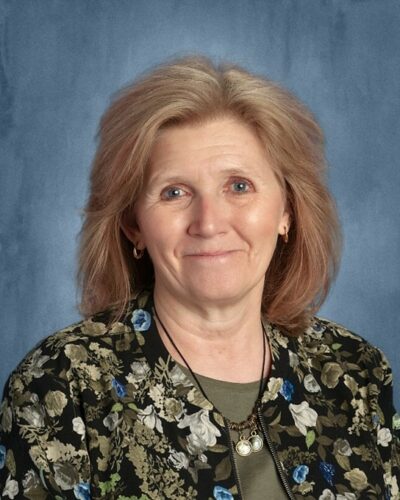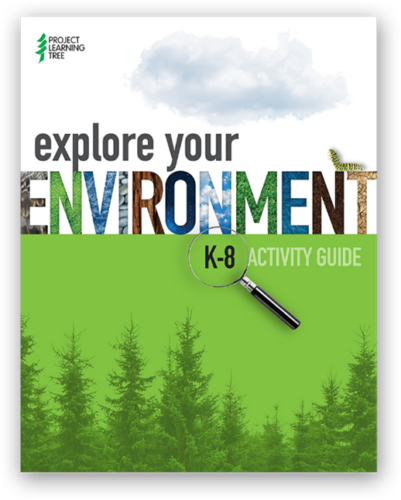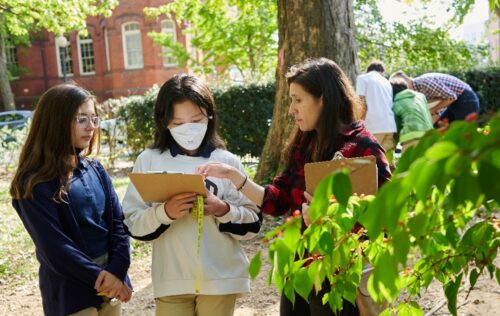 For many sixth graders, their focus is elsewhere besides science. But one inspiring educator from North Carolina, Betty Jo Moore, is nurturing the next generation of budding scientists and environmental stewards.
For many sixth graders, their focus is elsewhere besides science. But one inspiring educator from North Carolina, Betty Jo Moore, is nurturing the next generation of budding scientists and environmental stewards.
After leaving a career in the corporate world, she became a substitute teacher, falling in love with teaching.
“Not having an education degree, I discovered lateral entry was an option. My career started in elementary school with a move to middle school in 2012. I now have a master’s degree in education (STEM-focused). As a lifelong learner (and a naturally curious person), I also am an American Meteorological Society (AMS) Certified Educator, National Geographic Certified Educator, Space Foundation Teacher Liaison, North Carolina Science Leadership Association (NCSLA) Fellow, NC Space Education Ambassador, NASA/JPL Solar System Ambassador, and am currently working on my Environmental Education Certification.”
Today, Betty Jo teaches sixth grade science and facilitates her school’s environmental club. She loves watching her students learn, ask questions, and see their eyes light up when they make connections. But most of all, she loves that every day she gets her students excited about science and the environment.
“My school is in the city. I love teaching outside and helping students experience what the outdoors and nature has to offer.”
Finding PLT

Betty Jo jumped at the chance to continue in her personal learning journey through the Sustainable Forestry Teachers Experience offered by the North Carolina Forestry Association.
“I applied for this program for several reasons – to learn about forestry, to learn about resources available in the Piedmont, and to look for ways to incorporate outdoor learning in my teaching. Getting the PLT training was a bonus for me.”
Hands-on learning is at the core of PLT – for students and educators. PLT’s in-person professional development events allow educators to experience engaging activities themselves.
“Being able to actually do some of the activities was great for me because I was in student-mode and was thinking of questions that my students might have. I also enjoyed being able to work with other passionate educators, to get new ideas and talk through them. I did not anticipate getting the materials for several of the activities that I could use with my students. And let’s not forget that getting a copy of the Explore Your Environment: K-8 Activity Guide was a big bonus! The best part was feeling more prepared to teach these lessons. Not only were we given kits for some of the lessons, but having online access and feeling more comfortable about integrating PLT into my classes and my club time, made me really appreciate the learning experience that I was a part of.”
Incorporating PLT into Existing Curriculum
 One of the benefits of PLT activities is how easily they can be integrated into your existing lessons.
One of the benefits of PLT activities is how easily they can be integrated into your existing lessons.
“Incorporating nature is not just for science. It can be connected to social studies, English language arts, math, and the arts.”
Betty Jo likes that “all activities can be leveled up or down. The Career Corner allows for great talking points, but probably the thing I like the most is that the activities are well thought out and very detailed.”
Students in her science class and environmental club are more actively engaged, asking thoughtful questions, and making connections. After doing the Water Wonders activity from the Explore Your Environment guide with her class, “students became interested in the creek that runs through the city park adjacent to our school. They are now monitoring the water quality in the creek. This brought up the question about how the water might be impacted after salt has been put on the roads in the winter. We will test the water before a snowfall and after a snowfall.”
The best part of this story is how students came up with this investigation on their own! Just one PLT activity inspired them to investigate cause and effect in their own community.
Betty Jo’s Advice to Educators
“If you are nervous about incorporating nature into your lessons, then take your lessons outdoors. Having students get out of the building to get fresh air, hear the birds, see the sky, touch tree bark can be a great way to help students develop their sense of wonder and curiosity. Being outside can be good for a student’s emotional well-being.”
Imagine what sparking one student’s curiosity can do, let alone 30 or 100 or hundreds of thousands of students across North America. And all it takes is one PLT activity to ignite that spark!
We are incredibly grateful for all educators (formal and non-formal), like Betty Jo, who are inspiring the next generation to take action, pursue green careers, and care for our environment.


